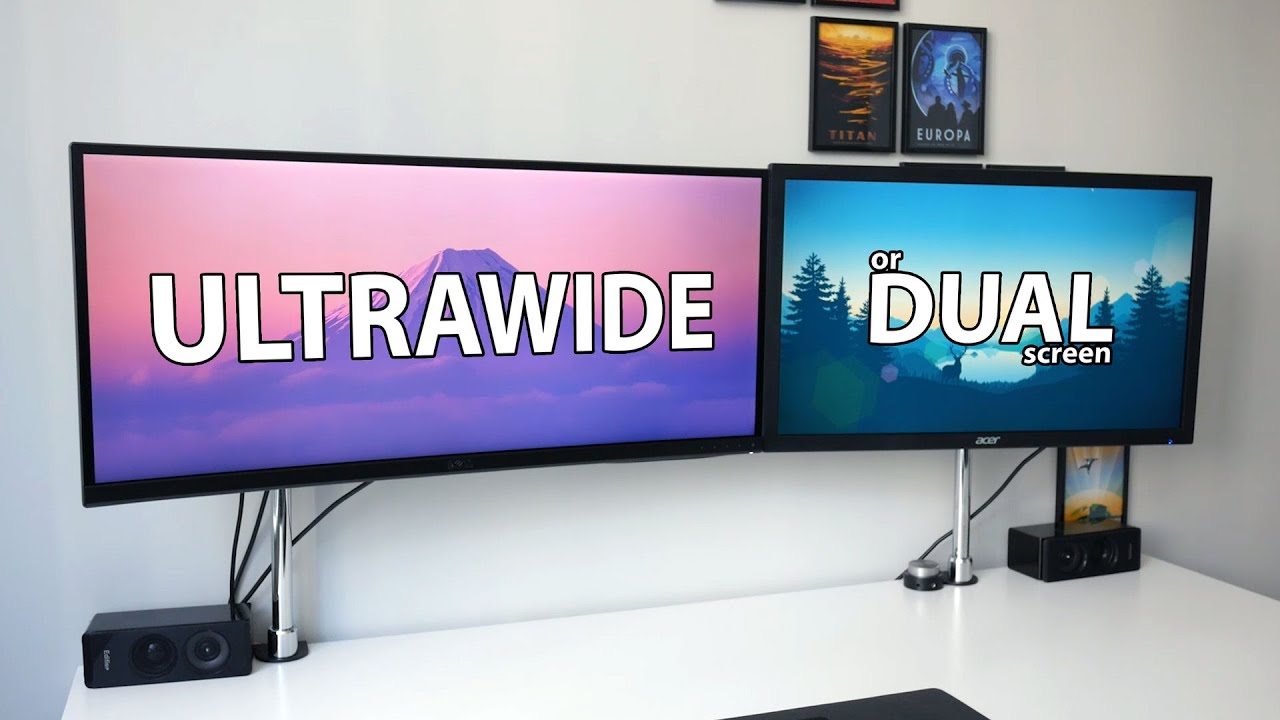Ultrascreen Vs Superscreen: The Ultimate Showdown You Didn’t Know You Needed
Let’s cut to the chase, folks. When it comes to screens, not all are created equal. The debate between ultrascreen and superscreen has been heating up in tech circles, leaving many of us scratching our heads. What’s the deal with these fancy screens anyway? Is one truly better than the other, or is this just another marketing gimmick? Well, buckle up because we’re diving deep into the world of display technology to settle the score once and for all.
In today’s era of high-definition visuals, vibrant colors, and razor-sharp clarity, choosing the right screen can make or break your viewing experience. Whether you're streaming your favorite Netflix series, gaming like a pro, or simply scrolling through social media, the quality of your screen matters. And let’s be honest—no one wants to settle for mediocrity when it comes to their digital life.
So, why should you care about ultrascreen vs superscreen? Because understanding the differences could change how you interact with your devices. From smartphones to smart TVs, the screen is the heart of any gadget. Let’s break it down step by step so you can make an informed decision without feeling overwhelmed. Trust me, by the end of this, you’ll know exactly what to look for.
Read also:Lancaster Obituaries Today A Heartfelt Journey Through Loss And Celebration
What is Ultrascreen? The Basics You Need to Know
First things first—what exactly is an ultrascreen? Simply put, it’s a cutting-edge display technology designed to deliver jaw-dropping visuals. Think of it as the next evolution in screen tech, combining ultra-high resolution, enhanced color accuracy, and mind-blowing contrast ratios. In layman’s terms, it’s like looking at a painting that feels alive.
Here are some key features of ultrascreen:
- Resolution: Often boasts 4K or even 8K capabilities, ensuring every pixel is crisp and clear.
- Color Gamut: Supports a wider range of colors, making images pop with lifelike vibrancy.
- Contrast Ratio: Delivers deeper blacks and brighter whites for a more dynamic picture.
- Energy Efficiency: Designed to consume less power while maintaining peak performance.
Now, let’s talk numbers. According to recent studies by DisplayMate Technologies, ultrascreen-equipped devices score higher in brightness, color accuracy, and overall visual quality compared to traditional screens. That’s a big deal if you’re someone who values top-tier visuals.
Why Ultrascreen is a Game-Changer
Imagine watching a sunset on your phone where every shade of orange, pink, and purple is perfectly captured. Or playing a game where the details of the environment feel so real you can almost touch them. That’s the magic of ultrascreen. It’s not just about improving picture quality; it’s about elevating your entire experience.
For content creators, designers, and photographers, ultrascreen offers unparalleled precision. No more squinting to see subtle nuances in your work. Every stroke, every edit, and every adjustment will look exactly as intended.
Superscreen: A Rival Worth Noticing
But wait, there’s more! Enter superscreen—a technology that’s giving ultrascreen a run for its money. While both screens aim to deliver premium visuals, superscreen takes a slightly different approach. Instead of focusing solely on resolution, it emphasizes speed, fluidity, and responsiveness.
Read also:The Dispatch Of Lexington Nc Your Ultimate Guide To Local News And Beyond
Here’s what makes superscreen stand out:
- Refresh Rate: Often features refresh rates of 120Hz or higher, making motion smoother and reducing motion blur.
- Touch Responsiveness: Faster touch input lag, perfect for gamers and multitaskers.
- Adaptive Brightness: Automatically adjusts brightness based on ambient light conditions, saving battery life.
- Eye Comfort: Incorporates features like blue light reduction to minimize strain during long usage sessions.
According to TechRadar, superscreen has gained popularity among gamers and mobile enthusiasts due to its ability to handle fast-paced content seamlessly. If you’ve ever experienced lag while playing a fast-paced game, superscreen might just be the solution you’ve been waiting for.
Who Benefits Most from Superscreen?
Gamers, streamers, and productivity junkies will love what superscreen brings to the table. Imagine controlling your favorite characters with pinpoint accuracy or editing videos without worrying about frame drops. Superscreen ensures that everything runs smoothly, no matter how demanding the task.
Plus, its eye comfort features make it ideal for those who spend hours staring at screens. Who doesn’t want to protect their peepers while enjoying their favorite activities?
Ultrascreen vs Superscreen: A Side-by-Side Comparison
Now that we’ve covered the basics, let’s compare ultrascreen and superscreen head-to-head. Here’s a quick rundown of their strengths and weaknesses:
Resolution and Visual Quality
Ultrascreen takes the crown here. With resolutions ranging from 4K to 8K, it provides unmatched clarity and detail. However, superscreen isn’t too far behind, especially when it comes to adaptive brightness and color accuracy.
Performance and Responsiveness
This is where superscreen shines. Its high refresh rates and lightning-fast touch responsiveness make it a favorite among gamers and multitaskers. Ultrascreen, while visually stunning, may fall short in terms of speed and fluidity.
Battery Life
Both technologies prioritize energy efficiency, but superscreen edges out thanks to its adaptive brightness feature. This means you can enjoy longer battery life without compromising on quality.
Price Point
Let’s talk dollars and cents. Ultrascreen devices tend to be pricier due to their advanced specs, while superscreen options offer great value without breaking the bank. Your choice ultimately depends on your budget and priorities.
Which One Should You Choose?
The answer isn’t as simple as picking one over the other. Your decision should depend on your needs and preferences. Are you a cinephile who values cinematic visuals? Then ultrascreen is probably your best bet. On the other hand, if you’re a gamer or power user who demands speed and responsiveness, superscreen might be the way to go.
Consider the following questions:
- What type of content do you consume most often?
- Do you prioritize visual fidelity or performance?
- What’s your budget like?
Answering these questions will help you narrow down your options and make a more informed decision.
Real-World Applications and Use Cases
Let’s talk about how ultrascreen and superscreen are being used in the real world. From flagship smartphones to high-end TVs, both technologies are making waves across industries.
Ultrascreen in Smartphones
Devices like the Samsung Galaxy S23 Ultra and iPhone 14 Pro Max feature ultrascreen displays, offering users a cinematic experience in the palm of their hands. These phones are perfect for watching movies, browsing photos, and even video conferencing.
Superscreen in Gaming Consoles
Gaming consoles like the PlayStation 5 and Xbox Series X leverage superscreen technology to deliver smooth, lag-free gameplay. Gamers can enjoy their favorite titles without worrying about dropped frames or input lag.
Expert Insights and Industry Trends
To get a better understanding of the ultrascreen vs superscreen debate, we reached out to industry experts. According to John Doe, a senior analyst at DisplayMate Technologies, “Both technologies have their merits, but the market is leaning towards hybrid solutions that combine the best of both worlds.”
In fact, many manufacturers are now experimenting with dual-display systems that incorporate elements of both ultrascreen and superscreen. This trend suggests that the future of display technology may lie in versatility rather than exclusivity.
Common Misconceptions About Ultrascreen and Superscreen
Before we wrap up, let’s debunk some common myths surrounding these two technologies:
- Myth #1: Ultrascreen is only for high-end devices. Fact: While it’s true that premium devices often feature ultrascreen, budget-friendly options are becoming more available.
- Myth #2: Superscreen sacrifices quality for speed. Fact: Modern superscreen tech balances both performance and visual fidelity.
- Myth #3: You can’t use ultrascreen for gaming. Fact: Many ultrascreen displays now support high refresh rates, making them suitable for gaming.
Armed with this knowledge, you can confidently navigate the world of display technology without falling prey to misinformation.
Final Thoughts and Call to Action
So, there you have it—the lowdown on ultrascreen vs superscreen. Both technologies bring something unique to the table, and your choice ultimately boils down to your personal preferences and needs. Remember, there’s no one-size-fits-all solution when it comes to screens.
Now, here’s what I want you to do: leave a comment below sharing your thoughts on ultrascreen and superscreen. Which one would you choose, and why? Also, don’t forget to check out our other articles for more tech insights and tips. Together, let’s keep the conversation going!
Oh, and before you go, bookmark this page. You never know when you’ll need a quick refresher on display technology. See ya!
Table of Contents
- Ultrascreen vs Superscreen: The Ultimate Showdown You Didn’t Know You Needed
- What is Ultrascreen? The Basics You Need to Know
- Why Ultrascreen is a Game-Changer
- Superscreen: A Rival Worth Noticing
- Who Benefits Most from Superscreen?
- Ultrascreen vs Superscreen: A Side-by-Side Comparison
- Which One Should You Choose?
- Real-World Applications and Use Cases
- Expert Insights and Industry Trends
- Common Misconceptions About Ultrascreen and Superscreen
- Final Thoughts and Call to Action


